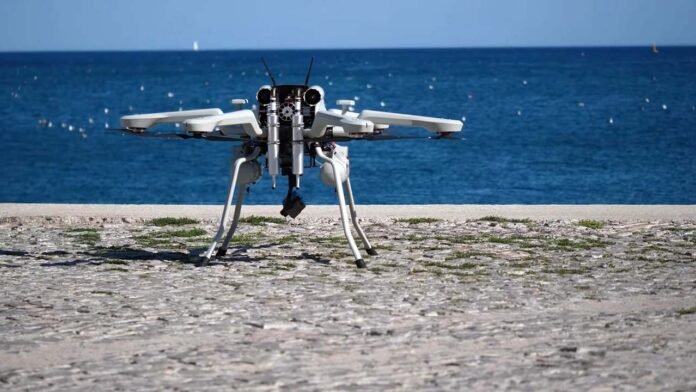Paris: Several NATO countries are pursuing new naval concepts based on sea drones programmed to keep adversaries out of allied waters, a nod to Ukraine’s pursuits with such weapons against Russian ships.
The alliance nations belong to the so-called Joint Capability Group for Maritime Unmanned Systems, or JCGMUS. The group, created following the 2018 NATO summit in Brussels, comprises more than a dozen nations considered full members, partners or observers.
Every September, member countries stage one of the largest experimentation exercises with naval unmanned systems – the drill is abbreviated REPMUS – in concert with the Portuguese Navy to help accelerate drone technology testing and interoperability among allies.
Next year, the emphasis will fall on using unmanned systems to keep adversary forces at a distance, a new tack for the group.
“The roadmap of REPMUS will focus in 2025 on non-traditional sea denial – that is limiting an adversary’s maritime freedom of action, including through anti-access, area denial and disruptive and dispersible capabilities, based in part on of what we’ve seen in Ukraine,” Craig Sawyer, chair of JCGMUS said during a panel discussion at the Euronaval defence exhibition here.
One of the elements that allowed the Ukrainian Navy to create an anti-access perimeter was the deployment of different types of unmanned surface vessels, which in some cases drove straight into Russian vessels at sea or in port to neutralise them.
The NATO official also added that one of the ambitions for next year’s drill will be to deliver an anti-submarine warfare barrier project demonstrator, an initiative established in 2020 and led by the United Kingdom.
“The ASW barrier seeks to develop a technical demonstrator comprising both legacy and interoperable maritime uncrewed systems to securely provide a force multiplying anti-submarine warfare capability,” Sawyer said during his presentation.
The project involves 12 other countries, including Italy, Canada, France, Germany, Spain, the US, Portugal, Denmark, the Netherlands, Norway, Sweden and Australia.
The widespread use of drones seen in Ukraine across all domains has spurred greater investments in these technologies, with many countries having launched national tenders to acquire new platforms.
While procuring more unmanned assets is a necessity for many nations, Sawyer warned of the risk of tackling them alone. “The need for standards and interoperability becomes critical when you realise the mass and scale UxS [unmanned systems] represent – we will never be able to manage thousands of assets as individual cases and programs,” he said.
Raksha Anirveda's editorial desk team brings in the collective experience of creative professionals - a fine mix of senior copy editors, writers, proofreaders and designers. Working as a team, they continuously create, manage, and curate content to sustain the magazine's profile and reputation in line with market trends and achieve magazine's goal.





